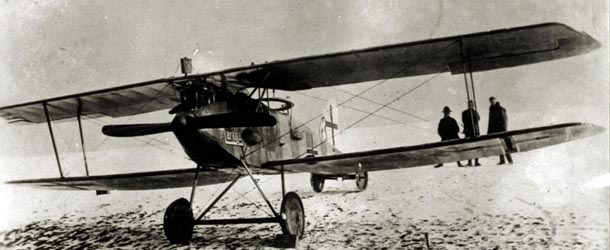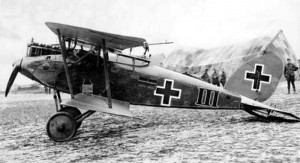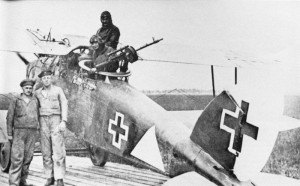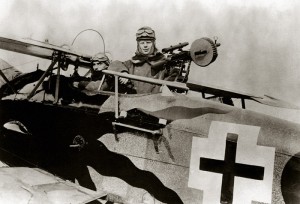Here's the fourth and final aircraft in the new series of the WW1 Wings of Glory Airplane Packs line: the Halberstadt CL.II, one of the most loved German aircraft of Word War I. The Halberstadt CL.II was a two seat escort fighter/ground attack aircraft and served in large numbers with the German Luftstreitkräfte (Imperial German Army Air Service) in 1917-18.
In late 1916, the Halberstadter Flugzeuwerke (airplane factory) began development of a new type of two seat fighter to fulfill a military requirement for a defensive patrol and pursuit aircraft. The new CL type aircraft were smaller than the existing C type and designed for use in Schutzstaffeln (Protection flights) escorting reconnaissance aircraft.
To meet this requirement, Halberstadt developed an aircraft based on its earlier, unsuccessful Halberstadt D.IV single seat fighter. Originally designated the Halberstadt C.II, it was re-designated the Halberstadt CL.II when the CL designation was applied.
The CL.II was a single engine biplane, with an all wooden structure. The fuselage was covered with thin plywood paneling, housing a crew of two in a single cockpit. It was armed with two fixed 7.92 mm (.312 in) machine guns for the pilot and a flexible 7.92 mm (.312 in) machine gun affixed to a raised ring mount, which provided a good field of fire. Operated by a rear gunner, it was capable of downward fire at targets on the ground. The single-bay wings were fabric-covered, with a swept upper wing. It was equipped with a Mercedes D.III 6-cylinder water cooled inline engine, 120 kW (160 hp).
The CL.II passed its type-test on 7 May 1917, which resulted in the placement of production orders. Halberstadt built 700 CL.IIs by the time production shifted to the improved CL.IV in mid-1918. A further 200 CL.II aircraft were built in 1918 by the Bayerische Flugzeug-Werke (BFW).
The CL.II entered service in August 1917, and proved extremely successful. Its excellent maneuverability, rate of climb, and good weapon field of fire allowed it to match opposing single-seat fighters. It also proved to be well suited to close-support, which became the primary role of CL-type aircraft. Such units being re-designated Schlachtstaffeln (Battle flights).
When the Cl.II arrived on the front, it was assigned individually or to the new Shutzstaffeln two-seater flights for protection duties. It was much smaller than the standard two-seater and when first encountered over the front, it was often mistaken for a single-seater by unwary Allied pilots, who paid for the mistake when within range of the observer with his machine gun. By autumn, it was discovered the airplane made a perfect ground attack and trench-strafing machine, with more aircraft shifting into the new Schlachstaffeln.
Ground support by the Schlachtstaffeln proved very effective, both in support of German attacks and to disrupt enemy attacks. An early example of the successful use of CL type aircraft in the ground attack role came during the German counter attack on 30 November 1917 during the Battle of Cambrai, where they were a major factor in the German performance.
The success of the German tactics at Cambrai, including the use of close air support, resulted in the Germans assembling large numbers of CL-types in support of the Spring Offensive in March 1918. Of the 38 Schlachtstaffeln (equipped with the CL.II, CL.IV, and the Hannover CL.III) available, 27 were deployed against the British forces during the initial attacks of Operation Michael. The CL.II remained in service until the end of the War.
Information sources: Cavanaugh Flight Museum, Military Factory, Wikipedia, Stringbags, AviationsMilitaires.net, Their Flying Machines.













Follow Us on